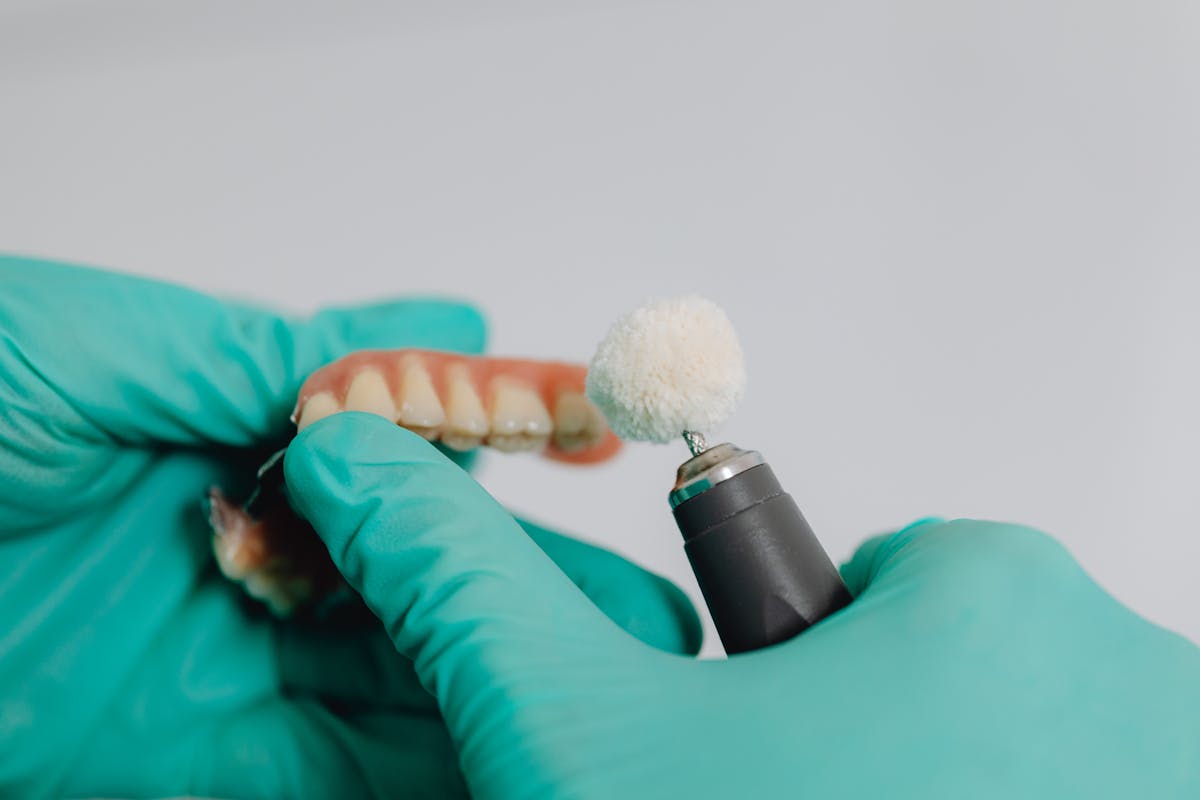The endodontic treatment represents a sophisticated dental procedure that preserves natural teeth through precise intervention. The process involves multiple coordinated steps, each requiring specific expertise and advanced technology. While many patients express anxiety about root canals, modern endodontic techniques have transformed this once-dreaded procedure into a predictable and manageable treatment. Understanding the systematic approach and what to expect can dramatically reduce patient concerns and lead to excellent outcomes.
Understanding Root Canal Anatomy and Function
The root canal system comprises a complex network of channels and passages within the tooth’s internal structure. These pathways extend from the pulp chamber at the tooth’s crown through the root tips, housing indispensable tissues, blood vessels, and nerve supply essential for tooth vitality.
The pulp chamber configuration varies among different teeth, with anterior teeth typically featuring single canals while posterior teeth may contain multiple canals. This anatomical framework serves three primary functions: developmental, as it forms dentin during tooth growth; sensory, through nerve endings that respond to temperature and pressure; and defensive, by producing reparative dentin when the tooth experiences trauma. Understanding these anatomical intricacies is pivotal for successful endodontic treatment, as practitioners must navigate and thoroughly clean these spaces during procedures.
Signs You May Need Endodontic Treatment
Common indicators of needed endodontic treatment include persistent tooth pain, sensitivity to temperature changes, and discomfort while chewing or applying pressure. Visual warning signs manifest as darkening or discoloration of the affected tooth, swelling or tenderness in surrounding gum tissue, and the presence of a pimple-like bump on the gums near the problematic area. The combination of pain symptoms and visible changes often signals underlying dental pulp or root issues that require professional evaluation and potential root canal therapy.
Common Pain Symptoms
When patients experience persistent dental discomfort, several distinct pain symptoms may indicate the need for endodontic treatment. A primary indicator is throbbing pain that intensifies during mastication or when pressure is applied to the affected tooth. This discomfort can range from mild to severe and may persist for extended periods.
Patients often report referred pain, where discomfort radiates to adjacent areas, including the jaw, neck, or sinuses. Temperature sensitivity, particularly to hot or cold stimuli, frequently occurs and may linger after the stimulus is removed. Additional symptoms include spontaneous pain that disrupts sleep, sharp sensations when biting down, and localized gum swelling. In some cases, patients experience a bitter taste or notice discoloration of the affected tooth, signaling potential nerve damage or infection requiring immediate evaluation.
Visual Warning Signs
Visual indicators suggesting the need for endodontic intervention include discoloration of tooth enamel, particularly darkening or graying that develops gradually. Patients should monitor for visible changes in gum tissue surrounding affected teeth, including swelling, redness, or the formation of small pustules near the root area.
Additional warning signs manifest as visible chips, cracks, or deep fractures in tooth surfaces that extend beyond superficial enamel layers. Persistent or recurring pimple-like bumps on the gums, known as fistulas, often indicate underlying infection requiring root canal therapy. The presence of exposed roots due to receding gums may also signal the need for endodontic evaluation, especially when accompanied by unusual tooth sensitivity. These visual symptoms, particularly when combined with pain or discomfort, warrant immediate professional assessment.
The Initial Consultation and Diagnosis Process
The initial consultation and diagnosis for endodontic treatment involves a systematic evaluation process that combines patient history, clinical examination, and diagnostic testing. The endodontist begins by reviewing the patient’s thorough medical history, including current medications, allergies, and systemic conditions that may affect treatment outcomes.
During the dental exam importance is paramount, incorporating visual inspection, percussion testing, palpation of surrounding tissues, and thermal sensitivity assessments. Digital radiographs provide detailed images of the tooth structure, root anatomy, and surrounding bone. Additional diagnostic tools may include electric pulp testing, selective anesthesia, and transillumination to identify fractures. The endodontist evaluates all collected data to determine the tooth’s liveliness, identify the source of pain, and develop an appropriate treatment plan tailored to the patient’s specific condition.
Preparing for Your Root Canal Procedure
Before undergoing a root canal procedure, patients must complete several essential preparatory steps to guarantee favorable treatment results. The endodontist will review medical history, current medications, and any allergies to ascertain treatment safety. X-rays taken during the initial consultation help determine the precise location and extent of infection.
Managing pre-procedure anxiety is pivotal for treatment success. Patients should discuss sedation options with their provider and arrange transportation if sedation will be administered. When preparing for the appointment, patients should eat a light meal before treatment unless instructed otherwise, wear comfortable clothing, and avoid smoking for at least 24 hours prior. Additionally, any prescribed antibiotics must be taken as directed to address existing infections. The endodontist may also recommend temporarily discontinuing certain medications that could interfere with the procedure.
Modern Techniques and Technology in Endodontics
Recent advancements in endodontic technology have revolutionized root canal treatments, enabling practitioners to achieve higher success rates with enhanced precision and reduced patient discomfort. Digital radiography and 3D cone-beam computed tomography (CBCT) represent significant imaging advancements that allow endodontists to visualize root canal anatomy with unprecedented detail.
Procedural innovations include the integration of surgical microscopes, ultrasonic instruments, and nickel-titanium rotary files. These tools facilitate more thorough cleaning of canal systems while preserving tooth structure. Electronic apex locators now provide precise measurements of root canal length, while specialized obturation systems guarantee complete filling of cleaned canals. Additionally, laser-assisted endodontic procedures offer enhanced disinfection capabilities. Contemporary endodontic practices also utilize computer-aided design and manufacturing (CAD/CAM) technology for creating precise restorations following treatment completion.

The Step-by-Step Treatment Process
Root canal treatment follows a systematic protocol that combines diagnostic assessment with precise clinical intervention. The procedure overview begins with radiographic examination and pulp testing, followed by local anesthesia administration. The dentist then isolates the affected tooth using a rubber dam and creates an access cavity to reach the infected pulp chamber.
The treatment timeline typically involves cleaning and shaping the root canals using specialized instruments, removing infected tissue and debris through irrigation. Once the canals are thoroughly disinfected, they are dried and filled with gutta-percha, a biocompatible material. The access cavity is sealed with a temporary filling, and patients return for permanent restoration, usually a crown, to protect the treated tooth. Most treatments require one to two visits, depending on infection severity and canal complexity.
Post-Treatment Care and Recovery
Following endodontic treatment, patients require thorough post-operative care focused on managing temporary discomfort through prescribed medications and cold compresses. Regular follow-up appointments allow endodontists to monitor healing progress and guarantee the restored tooth’s stability through clinical examinations and radiographs. Patients must maintain meticulous oral hygiene practices and follow specific dietary restrictions, including avoiding hard foods and extreme temperature beverages during the initial recovery period.
Managing Pain and Discomfort
Proper management of post-endodontic pain and discomfort plays a crucial role in patient recovery and treatment success. Patients typically experience mild to moderate discomfort for 24-72 hours following the procedure, which can be effectively managed through prescribed or over-the-counter analgesics.
Managing post procedure discomfort involves a combination of pharmacological and non-pharmacological approaches. Techniques for pain relief include taking prescribed NSAIDs as directed, applying cold compresses to the affected area for 15-minute intervals, and maintaining an elevated head position while sleeping. Patients should avoid chewing on the treated tooth until permanent restoration is complete. If pain persists beyond 72 hours or intensifies, immediate consultation with the endodontist is necessary to rule out complications or infection.
Follow-up Dental Visits
Regular follow-up visits constitute an essential component of endodontic aftercare, typically scheduled at specific intervals to monitor healing and assess treatment efficacy. The initial follow-up visit scheduling usually occurs within one week post-procedure, followed by subsequent appointments at three, six, and twelve months.
During these visits, dental professionals conduct exhaustive examinations, including radiographic imaging to verify proper healing of the treated area. Post-treatment monitoring involves checking for signs of infection, evaluating tissue regeneration, and confirming the stability of any permanent restorations. Patients must report any persistent pain, swelling, or unusual symptoms between scheduled appointments.
Should complications arise, early detection through routine follow-ups enables prompt intervention, drastically improving long-term treatment outcomes. These appointments also provide opportunities to reinforce proper oral hygiene practices and address any emerging concerns.
Diet and Oral Hygiene
Maintaining specific dietary restrictions and oral hygiene protocols in the post-endodontic recovery period greatly impacts treatment success. Patients should adhere to a balanced diet that minimizes sugary and acidic foods while focusing on nutrient-rich options that promote healing. Soft foods are recommended for the first 48-72 hours to prevent unnecessary pressure on the treated tooth.
Proper brushing techniques become pivotal during recovery, with emphasis on gentle circular motions using a soft-bristled toothbrush. Patients must clean around the treated area carefully, maintaining a 45-degree angle to the gum line. Regular flossing should resume 24 hours after treatment, avoiding aggressive movements near the treated tooth. Antimicrobial mouth rinses may be prescribed to reduce bacterial growth and support healing. Consistent oral hygiene practices help prevent reinfection and advance optimal treatment outcomes.
Long-Term Success and Maintenance
The enduring success of endodontic treatment depends on several critical post-procedure factors, including coronal seal integrity, periodontal health, and patient compliance with follow-up care. Regular dental examinations, typically scheduled every six months, enable practitioners to monitor the treated tooth’s condition and assess potential complications before they escalate.
For lifetime maintenance, patients must maintain ideal oral hygiene practices and protect the restored tooth from excessive forces or trauma. The long-term durability of endodontically treated teeth relies heavily on the quality of the final restoration, whether a crown or permanent filling. Studies indicate that properly maintained root canal treatments can achieve success rates exceeding 95% at the 5-year mark. Periodic radiographic evaluation helps detect any signs of periapical pathology, ensuring timely intervention if necessary.
Myths vs. Reality: Debunking Common Misconceptions
Despite widespread acceptance of endodontic treatment’s effectiveness, numerous misconceptions persist among patients and the general public regarding root canal procedures. Patient perceptions often include beliefs that the treatment causes severe pain, requires multiple lengthy appointments, or leads to future illness – all of which are unsupported by clinical evidence.
Common procedure myths include the notion that tooth extraction is a better alternative or that root canals fail frequently. Research demonstrates that modern endodontic techniques, combined with appropriate anesthesia, make the procedure virtually painless. Success rates exceed 95% when performed by qualified endodontists and properly restored. Additionally, scientific studies have conclusively disproven the outdated theory linking root canals to systemic diseases. Understanding these realities helps patients make informed decisions about their dental care while alleviating unnecessary anxiety about the treatment.
Frequently Asked Questions
Can I Eat Normally During the Days Between Multiple Root Canal Appointments?
Between root canal appointments, patients should follow dietary restrictions to avoid damaging temporary fillings. Soft foods are recommended while managing any residual pain. Hard, sticky, or extremely hot/cold foods should be avoided.
Will My Tooth Be More Fragile or Prone to Breaking After Treatment?
Teeth following endodontic treatment present an increased risk of tooth fracture due to internal structural changes. A permanent crown or other restorative work is typically necessary to protect and reinforce the treated tooth’s integrity.
Does Dental Insurance Typically Cover the Full Cost of Endodontic Treatment?
Dental insurance typically provides partial coverage for endodontic procedures, with specific coverage limitations varying by policy. Patients often need to explore payment plans or additional financing options to manage remaining out-of-pocket expenses.
Can I Drive Myself Home After Receiving Endodontic Treatment?
Driving ability post-endodontic treatment depends on pain management options utilized. If local anesthesia alone is administered, patients can typically drive. However, sedation or stronger medications require arranged transportation per post-treatment care requirements.
Is It Possible to Have a Root Canal While Pregnant?
Root canal treatment can be safely performed during pregnancy, preferably in the second trimester. Monitoring tooth sensitivity levels and following post-treatment precautions are essential. Local anesthetics are generally considered safe with proper medical consultation.
